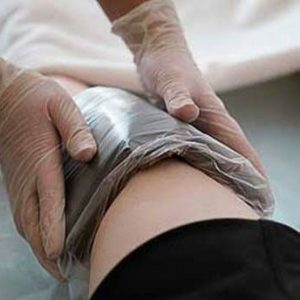The largest joint in the human body is considered to be the knee. During the walk, it affects the entire mass of the body, so damage in this area are fairly common. As a rule, all diseases of the knee joint – the result of various injuries, falls and excessive stress on the joint.
One rather unpleasant and in some cases dangerous, pathologies of the knee is the accumulation of fluid in the knee.
Fluid in the knee can be transparent and opaque, bloody and with a slight yellowish tinge. Even if the injury was minor or the load given to the knee, it may be the development of these States. Treatment in this case, you need to start immediately, and for this it is important to know the symptoms of fluid in the knee.
Symptoms and causes accumulation of fluid in the knee
Causes of considered States may be:
- gemartrozy – bleeding into the knee joint;
- the fractures of the joints (e.g. condyles of the femur and patella);
- damage to the meniscus;
- damage (stretching and tearing) of the ligaments.
Often the fluid in the knee occurs against a background of arthritis, infectious diseases, allergic reactions, hemophilia – these diseases can also act as reasons of development of the considered States.

Symptoms of accumulation of fluid in the knee is not apparent immediately, even if this condition was preceded by trauma. Any damage to the knee accompanied by swelling and oedema, severe pain and hemorrhage in severe cases. But the main, the first symptom of fluid in the knee is a significant increase in this area of the lower limb.
The second essential, is always pronounced symptom is pain is dull in nature. It appears because of deformation of the joint accumulated liquid. By the way, the increase in the knee joint and the pain is always accompanied by a stiffness of movement. In addition, the condition often occurs on the background of a slight rise in body temperature to subfebrile figures.
Doctors distinguish chronic form of synovitis is a condition characterized by slow accumulation of fluid in the knee. This process is accompanied by moderate pain, patients often just tolerate her, or start to self-medicate. The result of such careless attitude to their own health in most cases becomes a deforming arthrosis.
Note: in medicine klassificeret reactive synovitis of the knee joint, which refers to allergic diseases and is called the mechanical/toxic effect of precipitating factor. Reactive synovitis acts as allergic reactions, are not subject to treatment and disappears on its own as soon as the patient discontinued contact with the allergen.
Treatment of fluid in the knee
The only possible and most effective treatment is the removal of fluid from the knee joint. This procedure is performed in the operating room, the anesthesia for that, as a rule, is not required. The doctor gently introduces into the cavity of the affected joint thin needle (special development) and with a syringe sucking all the liquid.

After the accumulated fluid is removed, the doctor has to introduce into the cavity of antibiotics, regardless of whether he suspected infection. Then to the knee impose a pressure bandage or knee, thereby providing the treated joint rest. The patient must be in the ward and to be on bed rest.
Further treatment is therapeutic and it consists in the application of various anti-inflammatory drugs – often doctors use Diclofenac and Voltaren.
Please note: in the period of getting rid of fluid in knee doctors will be required to determine the cause of the development of the considered States. If it is not allocate, you will soon relapse problems and an operation for suctioning the liquid will have to repeat again.
Traditional medicine
Fluid in the knee is not a modern disease, it was known to our ancestors. There are many recipes that are based on different medicinal plants.

Here are just a few of them:
- Ointment from the herb comfrey. You need to take a glass of herb comfrey (pre-grind) and mix with 200 grams of lard. The resulting mass is put in the fridge for 5 days, and then rubbed into the patient’s knee joint twice a day. Be sure during treatment with ointment from the herb comfrey have on the patient’s knee joint to impose elastic bandage.
- Rye broth. In a liter of water to fill the glass half grains rye and boil on a small heat for 20 minutes. Then the broth to cool, strain and add 2 teaspoons of barberry, 200 ml of vodka (or diluted alcohol) and 500 grams of honey. All the ingredients are thoroughly mixed and drink in a cool, clean room for three weeks. He then take 2 tablespoons three times a day before each main meal.
- Oil of Bay leaf. Cook 2 tablespoons of chopped Bay leaves and pour them a glass (200 ml) vegetable oil. A tool needs to steep for weeks, and then they need to treat the damaged knee joint three times a day.
Note: in some cases, therapeutic methods, including from the category “traditional medicine” to help to get rid fluid in the knee, reduce inflammation and reduce pain. But! First, this treatment removes the root cause of the development of the considered States. Secondly, is only symptomatic effects, does not prevent the development of infection. Thirdly, in the absence of timely qualified medical assistance can develop a deforming arthrosis, which is impossible to cure.
Fluid in the knee – a condition not dangerous for human life. But to solve this problem you need urgently, because she not only brings a lot of discomfort, but also leads to complications.



